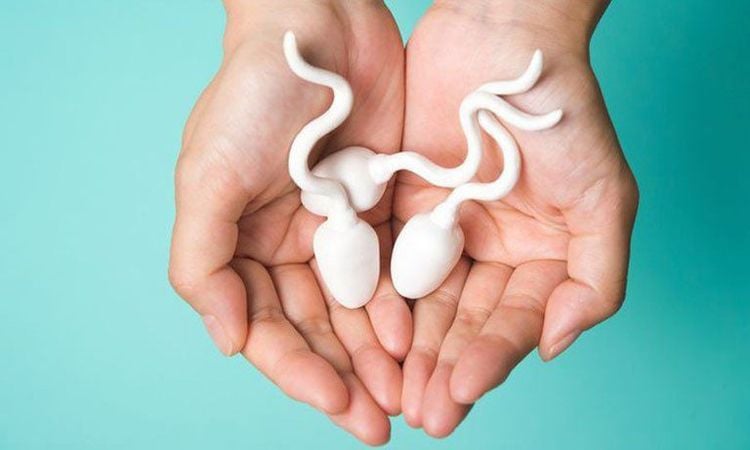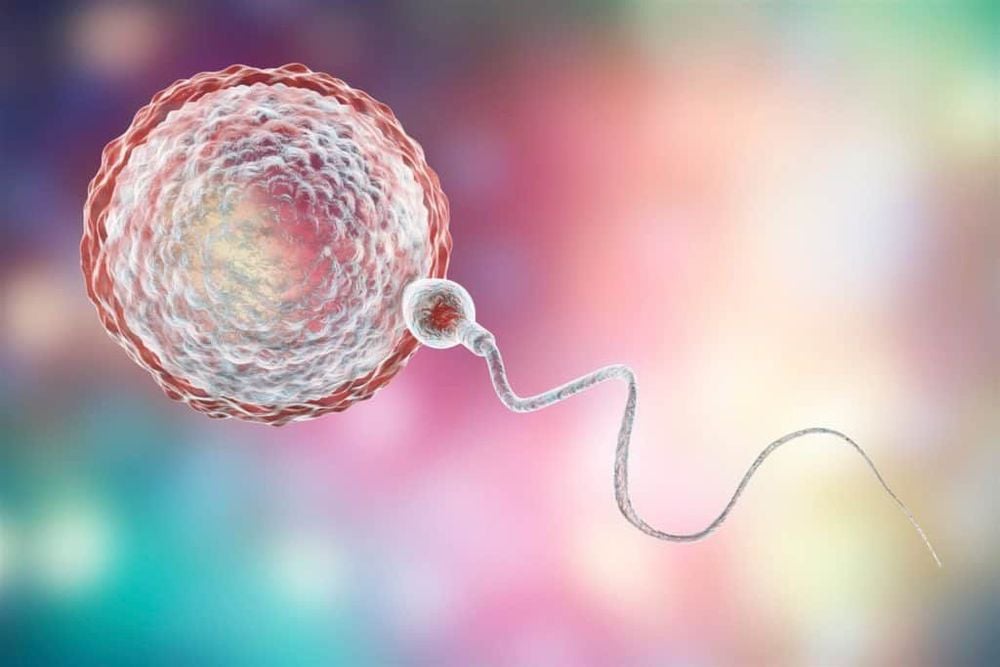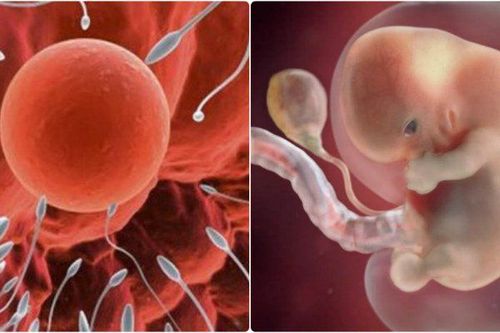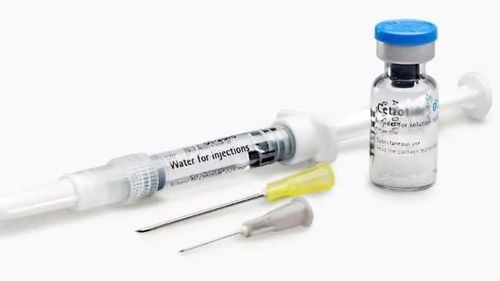This is an automatically translated article.
We all know the basics of the baby-making process. You have sex, then the sperm travels a long way to meet the egg. And as a result you have a baby. Is this correct? It might be a bit more complicated than that. Understanding the mechanics of pregnancy will help you better understand your fertility.As mentioned above, surely all parents have grasped the most basic things about how a child is born. A man and woman have sex and more than 9 months later, a beautiful baby is born. However, in reality, from having sex to being born is a very long way. Here are some interesting facts during pregnancy that many people may not know.
1. How does a woman's egg develop?
For women, fertility depends on the ovaries, two small almond-shaped glands located symmetrically on either side of the uterus. Each woman is born with a fixed number of eggs, usually one to two million, and cannot produce any more. During the reproductive period, each woman can release about 400 eggs, starting from the first menstrual cycle until the end of menopause (usually between the ages of 45 and 55). In the middle of each menstrual cycle, especially between day 9 and day 21, an egg cell in one of the ovaries that reaches maturity is released and quickly placed in the fallopian tube of the other. corresponding. A fallopian tube is a small tube, a few centimeters long, that connects the ovary to the uterus.This release is also known as ovulation, which initiates the period with the highest conception rate. Eggs only live for about 24 hours after ovulation, so egg cells need to be fertilized early for conception to occur. If the egg meets a healthy sperm on its way to the uterus, fertilization takes place and a zygote will follow the fallopian tube to the uterus, starting the process of creating a new life. In the absence of fertilization, the eggs will end their journey in the uterus, where they will be absorbed by the body or out through the vagina through the menstrual cycle. When a woman is not pregnant, the ovaries stop producing the hormones estrogen and progesterone (the hormone that helps maintain pregnancy), the lining of the uterus that is already thickening in preparation for the development of the zygote In and out is excreted through the vagina.
Trắc nghiệm: Bạn có hiểu đúng về dấu hiệu mang thai sớm?
Các dấu hiệu mang thai sớm không phải chỉ mỗi trễ kinh mà còn có rất nhiều dấu hiệu khác như xuất huyết âm đạo, ngực căng tức,… Điểm xem bạn biết được bao nhiêu dấu hiệu mang thai sớm thông qua bài trắc nghiệm này nhé!
2. The process of creating sperm in men
A man's body almost continuously produces millions of sperm with the sole purpose of entering a woman's uterus to meet and fertilize an egg. While every woman is born with a fixed number of eggs, men need regular sperm production and it takes 64 to 72 days for sperm cells to develop.On average, sperm only live for a few weeks in a man's body and about 250 million sperm cells are released after each ejaculation. That means new sperm is always being produced. The newly produced sperm will begin to develop in the testicles, two glands located in the scrotum below the penis. The testicles are kept outside the body because they are quite sensitive to temperature.
To produce healthy sperm cells, the testicles must always be in a state of temperature about 40C lower than body temperature. The developed sperm is stored in a part of the testicle called the epididymis before being mixed with semen in preparation for ejaculation.
Although millions of sperm are born and released with each ejaculation, only one of them can fertilize an egg, even in cases of twins. The sex of the embryo depends on the type of sperm that fertilizes the egg. Sperm carrying the Y chromosome determines the birth of a boy, while sperm carrying the X chromosome determines the birth of a girl. Many people have tried to find all kinds of ways to interfere in the sex selection process for children, one of these ways is actually related to the scientific evidence, but in reality, gender A child's personality is always determined at random.

3. Does orgasm increase your chances of conceiving and having children?
Besides the feeling of euphoria, orgasm also provides important biological functions.In men, orgasm pushes sperm-rich semen into the vagina, back up into the uterus, making it easier for them to travel to the fallopian tubes, which makes it easier for sperm to meet and fertilize an egg.
For women, orgasm can also increase the chances of conception. Some studies have shown that contractions during a woman's orgasm pull sperm deeper into the uterus (although other studies have failed to find evidence to support this claim). this).
The orgasm in both men and women does not harm the body, but only increases the chances of pregnancy for the couple. It should also be added that many of these couples also ask the question, is there a certain sex position that can increase the chances of pregnancy? Many people have heard that certain positions during sex are the best because they allow the man's penis and sperm to penetrate deeper and increase the chances of sperm and egg meeting. However, there is no scientific evidence that sex positions have any effect on a woman's pregnancy rate.
The most important thing about sex is that both of you have a good time and they need to do it regularly to maintain the presence of sperm in the female reproductive tract, especially during periods. Ovulation. That means you should both aim to have sex every other day during your mid-cycle. Therefore, the advice from experts is to do whatever makes you both happy during sex, because that will make it easier for them to orgasm and increase their chances of getting pregnant.

4. Which sperm cell will meet the egg first?
By the time a man's sperm enters a woman's reproductive tract, there's nothing you can do but wait. Many people believe that, if a woman lies on her back with a pillow raised at the hip so that gravity makes it easier for sperm to enter the uterus and meet an egg, the possibility of pregnancy will be higher, but there is no There is no scientific evidence to support this claim.While sex is going on, a lot of other activities in both of your bodies are still going on. Millions of sperm begin their journey to find and fertilize an egg, but it's not an easy journey. The first obstacle that sperm face is the acidity of a woman's vagina, then the mucus in the cervix that makes it impossible for them to penetrate easily, except for the days around when the egg is released. which this mucus layer will thin so that some of the healthiest sperm can get through. But that's not all. Sperm that survive through this mucus still have a very long way to go. In short, each sperm cell that wants to meet and fertilize an egg needs to travel a distance of more than 10cm from the cervix, through the uterus to the fallopian tubes. If an egg is not found in either of the two fallopian tubes, sperm can survive in a woman's reproductive tract for five to seven days. Only a few dozen sperm survive until then, the rest get stuck, ejected or die on the way. These few remaining sperm still have to face the egg's outer shell before thinking of getting inside and starting the fertilization process. Only the fastest and healthy one can break through this barrier because as soon as the sperm penetrates, the outer shell of the egg will immediately change to prevent the appearance of any other sperm. It's like a protective shield that clamps down on the egg just as the first sperm is inside.

The process of penetration and fertilization of sperm with an egg to make a woman pregnant may not be as simple as many people think. Only the strongest and fastest cell among millions of sperm cells has had the good fortune to meet and fertilize an egg when before that, they had to go through a very long and difficult journey. Ejaculating inside the vagina is necessary to have a baby, but the fact that sex positions do not affect this problem too much. Some people think that lying on their back for a few minutes after sex makes it easier for sperm to reach an egg, but in fact, there are no studies to support this. Therefore, do what is most comfortable for both of you, let things go naturally because pregnancy and childbirth is a privilege for parents.
To prepare for a healthy pregnancy, both husband and wife should check their reproductive health 3-5 months before becoming pregnant.

Get vaccinated before pregnancy (especially against rubella because rubella in pregnancy is extremely dangerous ) Genetic testing to screen for genetic diseases before pregnancy Check for gynecological infections Avoid affecting the health of the mother and the fetus Especially women over 35 years old who want to get pregnant (especially if they have never been pregnant) will have to have a very detailed health check because pregnancy at this age is common. problems: Ovarian failure, premature birth, higher risk of birth defects, placenta previa, preeclampsia. The husband should:
Check reproductive health, detect diseases of testicular atrophy, physiological weakness, weak sperm... Sexually transmitted diseases, especially those that cannot be cured, are extremely dangerous. Vinmec currently has many comprehensive health care programs for couples, pregnant mothers and their unborn babies, including basic pre-marital examination packages, advanced pre-marital examination packages, and maternity packages. . Vinmec has a team of experienced doctors in the fields of obstetrics and gynecology, IVF, stem cells, gene technology, capable of synchronously and comprehensively deploying the most advanced assisted reproductive techniques today.
For specific information about fertility and maternity packages at Vinmec, please contact the hospitals and clinics of Vinmec health system nationwide.
Please dial HOTLINE for more information or register for an appointment HERE. Download MyVinmec app to make appointments faster and to manage your bookings easily.
Reference source: babycenter.com, todaysparent.com












